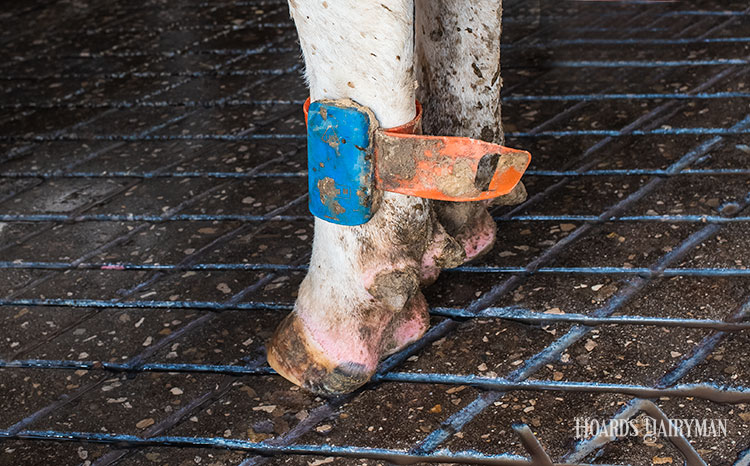
Implementing an activity monitoring system is a serious investment for a dairy farm. That can be paid back by saving labor costs on heat detection and getting cows bred at the right time. But there is even more information to be gleaned from these sensors that shouldn’t be overlooked, said Stefan Borchardt during the Dairy Cattle Reproduction Council Annual Meeting.
Borchardt, a professor at the Free University in Berlin, Germany, explained that estrus activity during the voluntary waiting period (VWP) and estrus strength are two pieces of data activity monitors pick up that can help farmers understand more about their cows as they can be indicators of fertility.
In one research study he described, cows on five farms were monitored for estrus alerts during the VWP. More than half (53%) showed no estrus by 40 days in milk (DIM). Those were the cows that eventually had the shortest heats at their first breeding.
The cows that did show estrus during the VWP were separated into those that showed one heat and those that showed two or more. Borchardt stated that first service conception risk was almost 10% higher for the cows with two or more heat events compared to anestrus cows. Consequently, the median days open for those animals was 24 days less than the cows that showed no heats.
Of course, there are multiple systems of activity monitors that may react slightly differently on a cow. Though it wasn’t as big of a study, Borchardt noted that another trial using a different monitor system had similar results: cows that showed heat during the VWP later had longer heats and were more likely to be pregnant by 200 DIM. Here, 41% of cows exhibited at least two heats in the VWP. Metritis, stillbirth, and retained placenta were among the factors that elevated the chance a cow would not show estrus, he added.
Borchardt summarized that estrus expression during the VWP appears to be a good proxy for fertility. That’s further supported by the evidence that estrus expression leads to stronger heats, and stronger heats correlate linearly to better pregnancy per A.I. This has been duplicated on multiple farms and with various types of semen, he continued.
“I think it’s more of a symptom than a cause,” Borchardt said of the relationship between estrus intensity and better reproductive performance. Although it’s not clear why cows show weak heats, progesterone level seems to have an effect. Cows with more intense heats typically have more estrogen and less progesterone circulating, which would boost the chances of conception. On the other hand, Borchardt said, when cows have weak heats, they experience more ovulation failure and have a greater risk of pregnancy loss.
Recognizing these trends means dairy farmers utilizing activity systems can detect cows that may have trouble getting pregnant earlier. This biology also highlights the need for a smooth transition period that allows cows to resume cyclicity. The VWP may be a period of waiting, but that doesn’t mean nothing important is happening.








